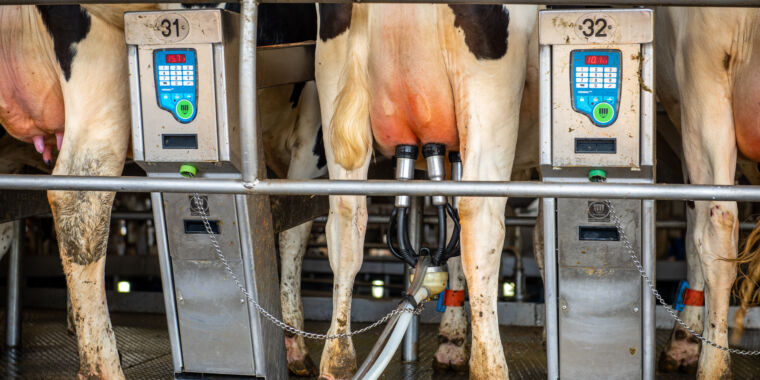Avian Influenza Virus Detected in Commercial Milk Supply
The Food and Drug Administration (FDA) released a statement reporting the detection of genetic fragments from the highly-pathogenic avian influenza virus H5N1 in the pasteurized, commercial milk supply. However, current testing methods, which involve quantitative polymerase chain reaction (qPCR), can only determine the presence of viral genetic material; they are unable to distinguish whether the genetic material originates from live and infectious viral particles or remnants of dead ones eradicated during the pasteurization process.
Ongoing testing is being conducted to determine whether viable, infectious H5N1 can be positively identified in milk samples. Despite these findings, the FDA maintains its position that the commercial milk supply remains safe. In a detailed explanation of the ongoing testing and findings, the FDA stated, “To date, we have seen nothing that would change our assessment that the commercial milk supply is safe.”
Increased Risk and Concerns
The first ever documented cases of H5N1 in US dairy cows were confirmed in a Texas herd on March 25. The virus has since spread to at least 32 herds across eight states. This alarming jump to bovines has prompted fears that the virus may be evolving to infect mammals more efficiently, heightening concerns about potential transmission to humans.
Despite the outbreak among the nation’s dairy herds, federal agencies remain confident that the virus poses minimal to no risk to milk supply safety. Federal FAQ publications reassure that the pasteurization process effectively eliminates bacteria and viruses, including influenza, from the milk supply before reaching consumers.
Pasteurization Process and Risks
The FDA reiterated that studies have shown pasteurization processes for eggs, which involve lower temperatures than those used for milk, effectively deactivate H5N1. Nonetheless, investigations by the FDA, the Centers for Disease Control and Prevention (CDC), and the US Department of Agriculture are ongoing to evaluate potential risks and assess the ability of pasteurization to inactivate the specific virus.
While the pasteurization process is expected to render the virus inactive, it is not equivalent to complete sterilization. Multiple qPCR tests on pasteurized milk samples revealed the presence of HPAI genetic fragments. Although pasteurization typically eliminates viruses, remnants can still be detected.
Ongoing Testing and Monitoring
Further tests, including egg inoculation tests, will be conducted to determine viral viability and infectious potential. The FDA plans to release results in the coming days to weeks. Monitoring of emergency department data and flu test results for any signs of unusual flu-like illness or activity indicating H5N1 transmission to humans is ongoing. To date, surveillance systems have not detected any alarming trends or unusual activity. The FDA emphasizes its commitment to ensuring the safety of the milk supply and providing updated, actionable information as necessary.
Image/Photo credit: source url





